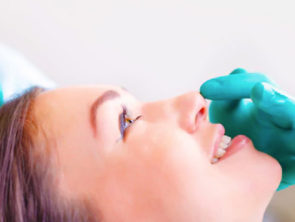What is Rhinoplasty?
Rhinoplasty is the correction of innate or acquired irregularities of the nose, as well as the total repair of the missing nose. Rhinoplasty is plastic surgery that not only studies how to restore the nose and its parts by replacing them with living tissue, but also ways to improve nose defects.
What is Rhinoplasty Surgery
Rhinoplasty surgery may be performed to repair:
- Hunched nose
- Large flared nostrils
- Wide tip, wide
- Nasal size in relation to facial features
In addition to improving appearance with nasal cosmetic surgery, people who suffer from airway obstruction can undergo functional nasal surgery to improve breathing. Functional nasal surgery, such as correction of:
- A deviated septum.
- The cartilage that separates the inside of the nose, straightens the airway to unblock the flow and freer breathing.
These functional surgeries are not cosmetic and, unlike cosmetic nose jobs, may be covered by insurance. Aesthetic surgery to change the shape of the nose can be combined with functional surgery to improve breathing. The structure of the nose is quite complex, being part of breathing it has a unique aesthetic and due to its shape our subconscious is able to identify a person through their nose since the angles and dimensions of the nose are different for each person. 90% of men want to have a nose that enhances their masculinity and enhances their appearance, on the other hand, women want a much thinner nose, with the tip slightly upturned, that complements their beauty.
WHO IS A CANDIDATE FOR A RHINOPLASTY?
Adolescents and young adults are the groups that most seek this type of surgery. The minimum age to perform this procedure depends on whether nasal growth is complete. This is at the approximate age in women at 15 years and in men at 16 years. Most patients are motivated to have rhinoplasty to achieve a better appearance and some to improve functionality at the same time. A smaller number only seeks to improve the functioning of the nose without altering its shape. There is another group of older patients, who are looking for a corrective rhinoplasty. Normally these patients have had previous surgeries that were not successful and have very specific points to correct. Most are good candidates for correcting these problems.
How is a Rhinoplasty performed?
A combination of various techniques is used depending on the problem to be corrected, such as lumps in profile (hump), bulbous or drooping nasal tip, or asymmetry problems. The changes are made internally to the structure of the nose to achieve the desired appearance. Internal changes can also be made to improve its functionality. There are three structures that determine the shape and functionality of the nose. The upper part consists of bone, the middle part of cartilage (called the upper lateral cartilage), and the tip also of cartilage (called the alar cartilage). The nasal septum is a cartilage that divides the nasal airway in two and provides support for the middle and distal third of the nose. A portion of bone is removed at the top of the nose to correct the hump, moving it inward to improve the width of the nose and restore that part of the nose.
How do I know what my nose after surgery?
There are computer programs where profile and front photos are entered, an approximation of how the patient will look after surgery can be seen. There is also a more artistic form with portraits, but none of them contemplate the way each patient heals in particular.
How long do the effects of surgery last?
The benefits of a Rhinoplasty are permanent. And they only operate again for a touch-up if the desired goals were not achieved in the first surgery. Although most are pleased after the first surgery.
What are the most common risks?
The most common problem is bleeding. The bleeding usually stops spontaneously, if the bleeding is profuse it stops with the administration of medication. Packing (plugging) the nose to stop bleeding is rarely used. Infections are rare in this procedure. Sometimes narrowing the nose for cosmetic results can impair the ability to breathe. Small lumps and irregularities may appear after the nose is deflated that may or may not need additional treatment. The removal of the cartilage of the deviated septum can leave a hole inside the nose between the airways, this is not common and is difficult to treat, it can cause whistling and nasal dryness. Most patients do not present complications of a Rhinoplasty.< /p>



